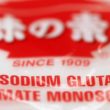You can always grab a tub of miso at your favorite supermarket. But wouldn’t it be fun if you create it at home? It’s a wonderful idea for you learn the art of miso-making. It’s something that allows you to come up with miso according to your own preferences and needs, simply by tweaking the base ingredients. Serving homemade miso is also a great way to have your health-conscious family and friends impressed!
Miso-making is actually a time-honored Japanese art, with each traditional miso shop having its own secrets in whipping up the highly nutritious superfood. However, manufacturers of today mass-produce miso that’s just as healthy as the traditionally-prepared kind but of course isn’t the same as they are prepared in the modern way.
Simply by getting your hands on a few ingredients, you can make miso right in your own kitchen with your own two hands! Certainly, creating miso from scratch is not as easy as stepping foot in your favorite supermarket or health food store and simply paying for a tub of ready-to-eat miso. You will find, however, that there is something rewarding about enjoying miso that you produced in your very kitchen!
Below you will find the very simple recipe. However, you may feel free to make certain adjustments with the ingredients on your next batch in order to come up with something that will suit your personal taste. Here’s how to make your own miso:
Ingredients:
- 400 grams of raw soybeans
- 300 grams of yeast culture (koji)
- 150 grams of salt
- 600 milliliters of water
Procedure:
- In a large bowl, place your raw soybeans. Pour water in it. Make sure that all of your soybeans are soaked. Allow the soybeans to soak in water for about 3 hours. After such time, you will sea that the soybeans have doubled in size. Soaking soybeans in water for several hours also helps in considerably shortening the cooking time.
- Grab your pressure cooker. Place your soaked soybeans as well as the water in it. Cover and cook for about 40 minutes at maximum pressure to make the soybeans really soft, simplifying the mashing process that will follow. Once cooked, grab a colander and drain the soybeans. However, do this procedure with a large bowl underneath because you have to save the water as you will need it for later.
- Transfer the drained soybeans in a large bowl. Reach for your potato masher and mash the cooked beans while they are still hot. Afterwards, the mashed soybeans should be allowed to cool to 35 to 40 °C. It’s important for the beans to be within such temperature range before adding your yeast culture. Otherwise, the yeast culture could become inactive, and your cooked soybeans will be left unfermented.
- Combine the soaking water with your salt, although you should remember to save a couple of teaspoons of salt for later. Stir until the salt is completely dissolved. Slowly pour this solution into your mashed soybeans, constantly stirring with a large wooden spoon.
- Once done mixing the two ingredients, reach for your yeast culture. Crumble it into the mix using your hand. Stir once again with your large wooden spoon until you end up with a smooth mixture.
- Grab a large ceramic container with a cylindrical shape, something that is suitable for food preparation. This will serve as your fermentation vat. Before placing the mashed soybeans with yeast culture in it, rub the container’s interiors with a little salt. Carefully transfer your soybeans to the container. Sprinkle the remaining salt on the top to prevent the growth of molds.
- Place a round-shaped kitchen paper on the surface. Press firmly. Place a wooden lid on the top, followed by a few weights such as well-washed stones. Place a wrapping paper on the lid of the ceramic container and secure with a piece of rubber band.
- Place the container in a clean corner of your kitchen wherein the temperature is anywhere between 15 to 25 °C. Your homemade miso should be ready in 6 to 12 months. Keep your inspection of your masterpiece to every couple of months only to maintain its quality.












